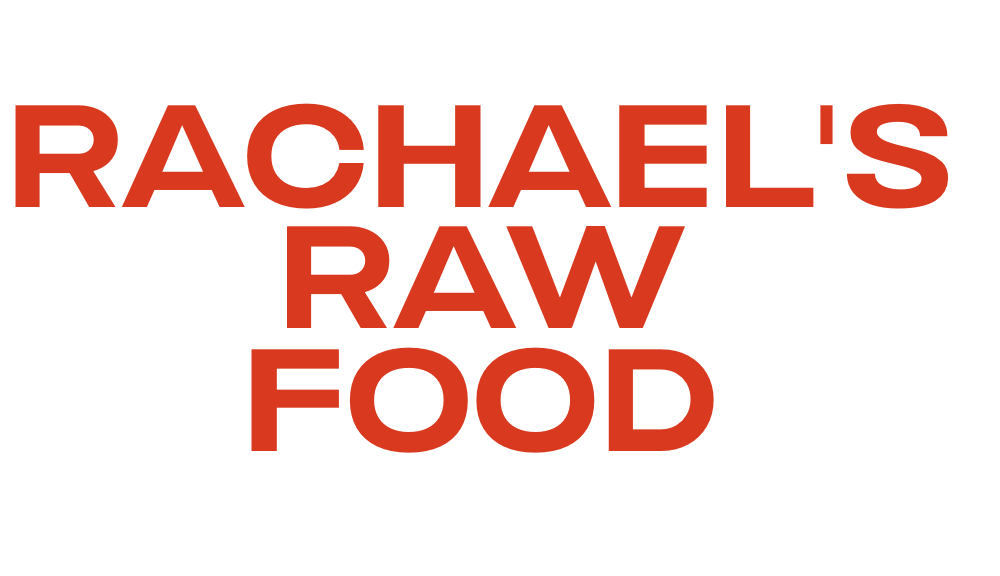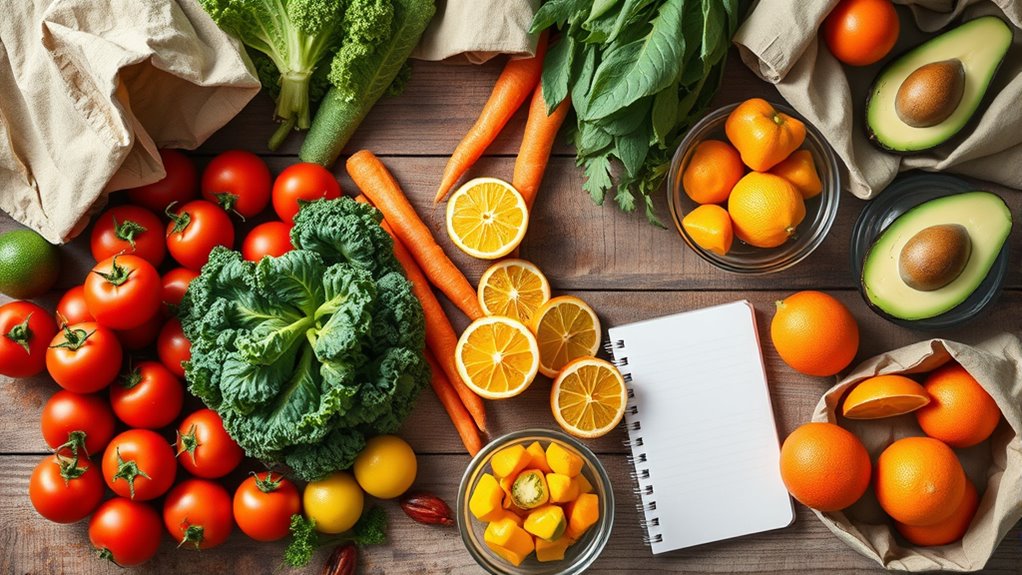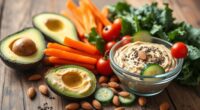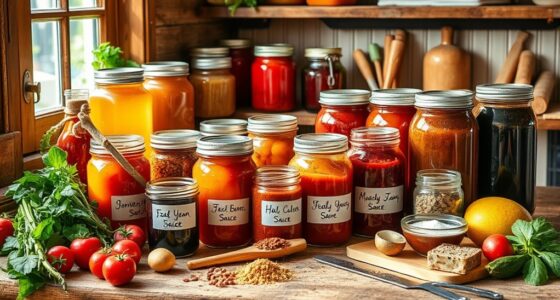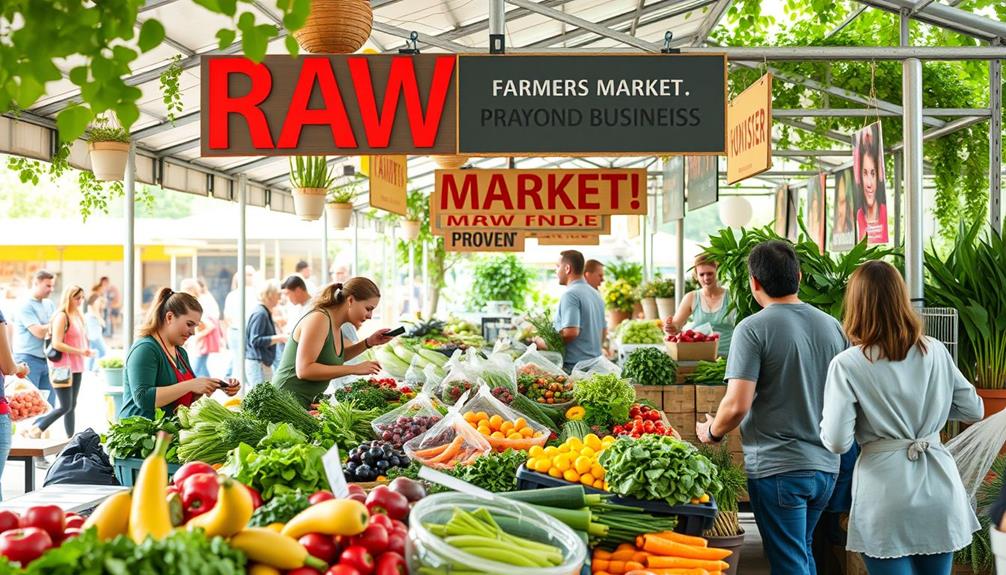Eating raw doesn’t have to be expensive if you plan smartly. Focus on buying seasonal, whole produce and shop at local markets or stores with discounts. Preparing raw meals at home helps you avoid costly pre-made snacks and restaurant expenses. Bulk buying staples like nuts and seeds also saves money. Growing your own produce adds freshness and savings. Stick to simple, nutrient-dense ingredients, and you’ll find raw eating budget-friendly. Keep going to discover more practical tips to save.
Key Takeaways
- Buying seasonal, whole produce and bulk staples reduces costs for raw food meals.
- Planning weekly meals and shopping lists prevents impulse buys and saves money.
- Preparing raw meals at home is more affordable than purchasing pre-made or convenience foods.
- Shopping at local markets and using store discounts can significantly lower expenses.
- Growing some vegetables and fruits at home enhances freshness and cuts long-term food costs.
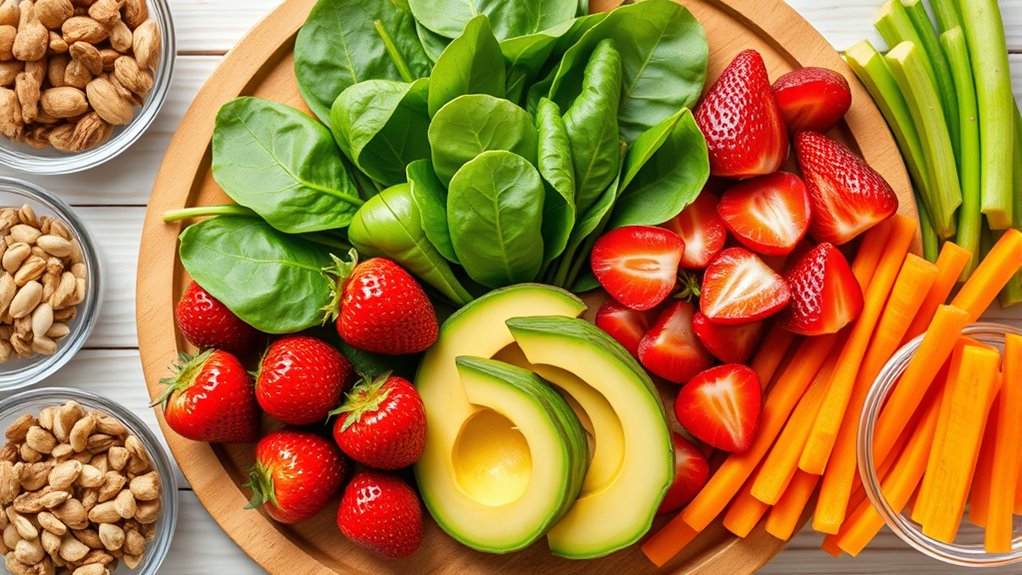
Eating raw can be a cost-effective way to boost your nutrition, but it requires some savvy planning. When you’re committed to eating raw, meal prep becomes your best friend. By prepping your meals ahead of time, you can buy ingredients in bulk and avoid costly last-minute trips to the store. It also helps you stick to your budget, preventing impulse buys that tend to add up quickly. When grocery shopping, focus on whole, fresh produce like fruits and vegetables, which are often more affordable when bought in season. Look for sales and discounts, and consider shopping at local farmers’ markets or produce stands for better prices. Keep an eye out for deals on staple items such as nuts, seeds, and dried fruits, which can add variety to your raw meals without breaking the bank.
Another key to eating raw on a budget is planning your grocery list carefully. Make a list based on your weekly meal prep plan, and stick to it to avoid unnecessary purchases. Incorporate versatile ingredients that can be used in multiple recipes—like carrots, cucumbers, or apples—so you get more value out of each purchase. When shopping, consider buying in bulk, especially for items like nuts, seeds, and dried fruits, which store well and can be used across various dishes. Also, don’t forget to check for store brands or generic options; they often offer the same quality at a lower price. Preparing your raw meals at home also saves money compared to eating out or buying pre-made raw snacks, which tend to be pricier.
To keep costs down, focus on simple, nutrient-dense ingredients rather than fancy or exotic produce. Leafy greens, root vegetables, and seasonal fruits can all be affordable and nutritious options. You might even consider growing some of your own produce if you have the space—this can considerably cut costs and ensure you always have fresh ingredients on hand. Additionally, incorporating home-based lifestyle strategies such as small-scale gardening can support your raw food goals and reduce expenses. Remember, eating raw doesn’t mean you have to spend a lot; it’s about making smart choices and planning ahead. By integrating meal prep into your routine and shopping strategically, you’ll be able to enjoy the benefits of raw eating without stretching your budget. With some discipline and a little research, you’ll find that eating raw is not only healthy but also wallet-friendly when approached thoughtfully.
Frequently Asked Questions
Are Organic Raw Foods More Cost-Effective Than Conventional Options?
When comparing organic vs. conventional raw foods, you might wonder which is more cost-effective. Organic options often cost more upfront, but they can save you money long-term by reducing health risks and improving nutrient intake. To make the most of your budget, focus on seasonal produce and buy in bulk. Remember, investing in organic raw foods supports better health and sustainability, even if the initial cost is higher.
How Can I Reduce Waste When Buying Raw Ingredients?
To reduce waste when buying raw ingredients, compare packaging methods—opt for bulk or minimal packaging to cut down on waste. Adopt seasonal buying strategies, as produce available in season tends to be fresher, cheaper, and lasts longer. You can also store ingredients properly and plan meals ahead, which helps use everything efficiently. These steps help you save money and reduce environmental impact while maintaining a healthy raw diet.
What Are Affordable Sources of Raw Superfoods?
You can find affordable raw superfoods by focusing on bulk buying, which lowers costs and guarantees you always have fresh ingredients. Incorporate superfoods into your diet with simple recipes like superfood smoothies, which are budget-friendly and nutritious. Look for local markets or co-ops offering bulk options. Dried or frozen superfoods also provide cost-effective alternatives, making it easier to enjoy the benefits of raw superfoods without overspending.
Can Meal Planning Help Save Money on Raw Food Diets?
Imagine your kitchen as a garden where careful planning blooms. Meal prep and storage techniques are your tools, helping you harvest fresh, cost-effective raw foods without waste. By planning your meals ahead, you reduce impulse buys and maximize produce freshness. This approach keeps your raw food diet affordable, ensuring you enjoy vibrant, nutritious meals while saving money and minimizing spoilage—making your raw food journey both sustainable and economical.
Are Community or Cooperative Stores Cheaper for Raw Food Shopping?
Community or cooperative stores often offer better prices for raw food shopping because they focus on bulk buying and supporting local markets. You can save money by purchasing in larger quantities, which reduces costs per item. Local markets also tend to have fresher produce at lower prices compared to conventional stores. So, shopping at these places helps you stick to your raw food budget while enjoying quality, affordable ingredients.
Conclusion
Eating raw might seem pricey at first, but with smart shopping and prep, you can keep costs in check. Think of it as turning your grocery bill into a small fortune — but instead, you’re fueling your body with vibrant, life-giving foods. Stay savvy, buy seasonal, and embrace simple snacks. Before you know it, you’ll be thriving on a raw food diet that’s as budget-friendly as it is nourishing — like a garden bursting with endless abundance!
